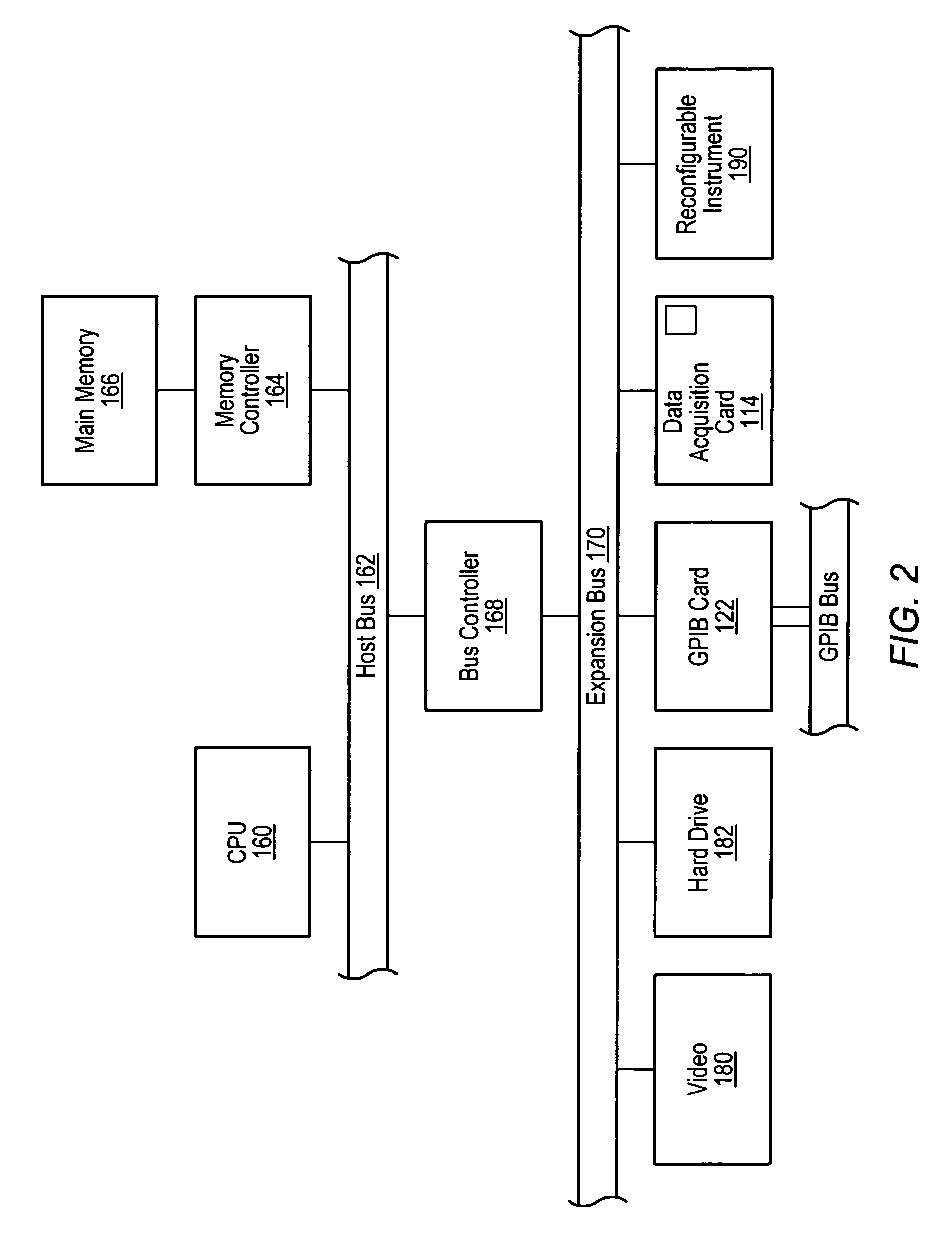Bugs or errors in user-supplied code modules may cause a test executive sequence to
crash when it is executed or to exhibit other problematic behavior.
Because test executive sequence execution involves executing both program instructions of the test executive engine and program instructions of user-supplied code modules, it can be difficult for users to determine the source of the error.
For example,
memory corruption caused by a user-supplied code module can lead to a
crash or odd behavior that happens long after the user-supplied code module finishes execution.
The symptoms of problems caused by bugs in user-supplied code modules can be intermittent, difficult to reproduce, and subject to changing or to temporarily disappearing when anything about the system is modified, including modifications intended to help diagnose the problem.
Because of this lack of
repeatability, these types of bugs are among the most difficult to resolve.
These type of bugs also have an additional problem in that when they occur due to user-supplied code that is run within the test executive engine's process space, a resulting
crash in the test executive application can be interpreted by the user as a vendor bug.
This can distract the user from focusing on where the problem is really located and can create a mistaken bad impression of the vendor's test executive application.
One common type of error that can be caused by user-supplied code modules is stack corruption.
For example, if the user-supplied code module contains a bug that causes it to write into memory locations outside its own stack frame then it may corrupt data in stack frames of the test executive engine.
This may cause a crash or other problem when executing the test executive sequence, as described above.
If the user specifies an incorrect prototype for the user-supplied code module (i.e., if the specified prototype does not match the actual prototype for the user-supplied code module), or if the actual prototype for the user-supplied code module changes later then the test executive engine may not be able to pass the correct parameters to the user-supplied code module, i.e., may not pass the parameters that the user-supplied code module expects.
For example, if the user-supplied code module expects to receive a buffer parameter on the stack and the test executive engine does not pass the buffer because the buffer parameter was not specified in the prototype which the user provided for the user-supplied code module, then the user-supplied code module may corrupt data in a higher stack frame when it attempts to write into the buffer.
For example, user-supplied code modules often have uninitialized
local variable bugs.
If the user-supplied code module attempts to use a
local variable whose value has not yet been initialized then the variable may contain random data, which may cause the user-supplied code module to crash or function incorrectly, or in some cases may cause the user-supplied code module to corrupt data belonging to the test executive engine.
For example, if a user-supplied code module called by a step in the test executive sequence contains a bug that causes it to write into memory locations outside its own stack frame then it may corrupt data in stack frames of the test executive engine.
However, since the user-supplied code module may legitimately modify or write into its own parameters, the parameters may not be stored along with the stack portion that is stored.
However, if any stack contents within the checked range were changed then the stack was corrupted.
However, in the event that the test executive engine determines that the stack was corrupted, the test executive engine may not be able to provide the user with details regarding the stack corruption, such as the specific memory location(s) that was corrupted or the contents of the corrupted location(s).
If the test executive engine finds that the stack was corrupted then the test executive engine may be operable to report an error in response.
It is possible that there is a mismatch between the parameters actually expected by the user-supplied code module and the parameters that are passed to the user-supplied code module on the stack by the test executive engine.
For example, the test executive engine may pass one or more parameters to the user-supplied code module based on the prototype specified by the user for the user-supplied code module when the test executive sequence was configured, but the specified prototype may not match the user-supplied code module's actual prototype, e.g., due to an error by the user in specifying the prototype or due to a subsequent change in the user-supplied code module.
Such a mismatch may cause the user-supplied code module to write beyond the bounds of its parameters on the stack.
It is also possible the user-supplied code module contains a bug which causes it to write beyond the bounds of its parameters on the stack.
If the test executive engine finds that the safety buffer was changed by the user-supplied code module then the test executive engine may be operable to report an error in response.
Thus, if the user-supplied code module writes beyond the bounds of its parameters into the safety buffer then this may not be detected by the test executive engine.
However, the presence of the safety buffer on the stack may still prevent the overwrite from causing a crash or other serious problem when executing the test executive sequence.
Where a user-supplied code module called by a step of the test executive sequence has an uninitialized local variable, the above-described method may cause the user-supplied code module to behave consistently by filling the local variable with a known value, which may greatly decrease the user's debugging effort.
 Login to View More
Login to View More  Login to View More
Login to View More 


